
It may not come as a surprise to you since I write for a living, but I love to read! If I?m being honest, there are days when I prefer books to people. For me, reading isn?t just a hobby or a way to kill a rainy Sunday afternoon, it?s something far more personal.
Growing up in a fairly small, conservative and economically depressed town, reading offered me an escape to places I otherwise could not go. With the flip of a page I could be whisked away to the Court of Versailles, attend classes at Hogwarts, visit Middle Earth, or travel to the far reaches of the galaxy to worlds I had never heard of.
As a teenager, books took on even greater meaning as I questioned my sexuality. I came of age in an era when there were no drag queen reality shows, before Will and Jack were making us laugh, and before playing LGBTQ roles became Oscar bait for [mostly] straight actors.
Books provided representation that was sorely lacking in the media. The less stringent censorship found in the publishing sphere allowed writers to explore a multitude of LGBTQ characters and themes through the lens of diversity.
For me, as for many LGBTQ folks, books were a source of validation and connection. They were founts of knowledge where I could learn more about LGBTQ experiences and the history of the rights movement. They provided characters I could relate to since their experiences were so much like my own.
Throughout the years, I have amassed a large collection of gay fiction from obscure to mainstream bestsellers. I have compiled a list of my 10 personal favorites which I return to time and time again. I do not argue that these novels represent the absolute best in the genre, but I believe they are novels that every gay man can connect with on a deeply emotional level.
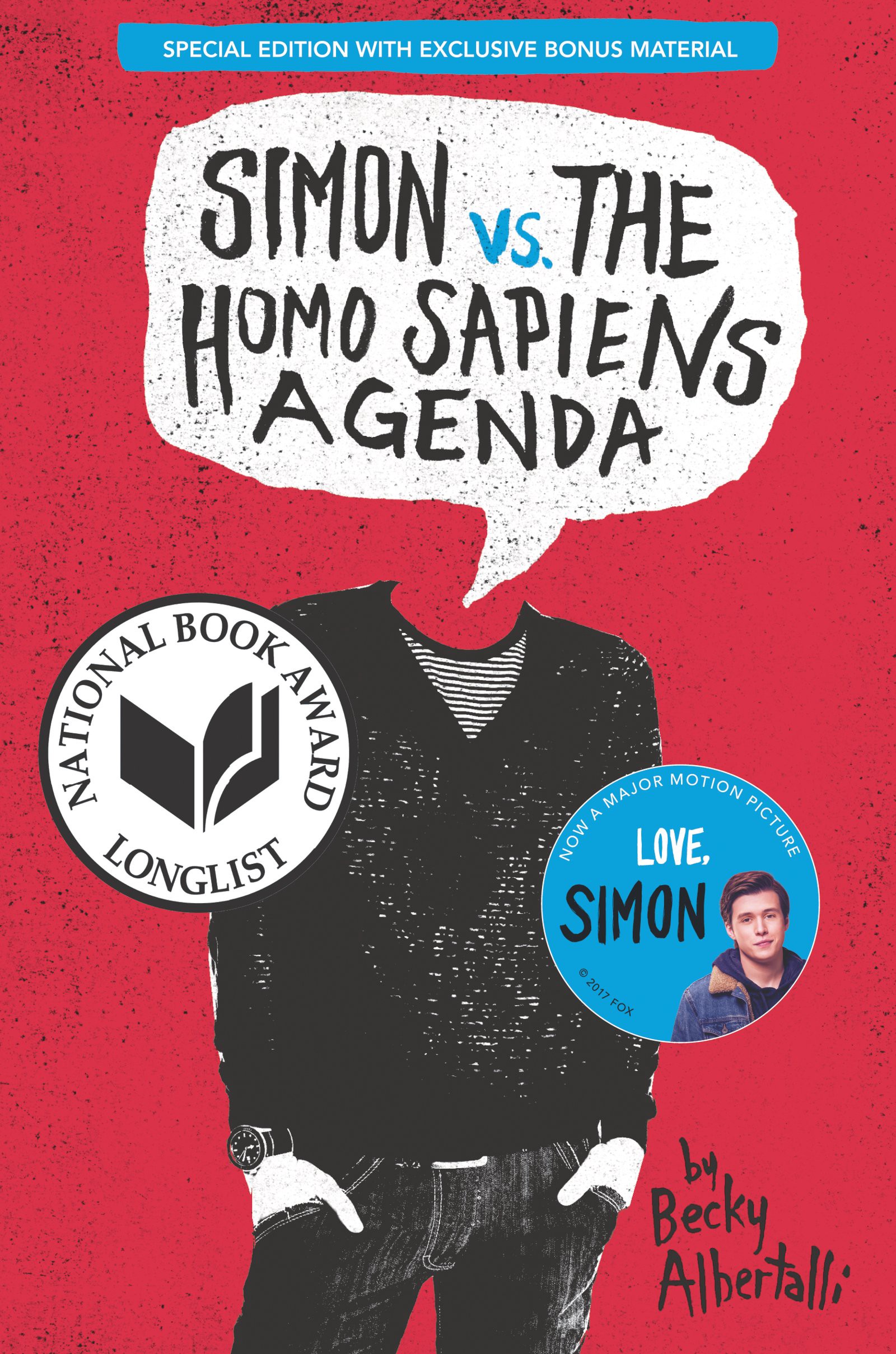
Simon vs. The Homo Sapiens Agenda
By Becky Albertalli
First published in 2016, Simon vs. The Homo Sapiens Agenda centers on Simon Spier a 16-year-old closeted gay teen growing up in Atlanta, Georgia. Using the pseudonym of ?Jacques,? Simon begins an email romance with a fellow student he only knows as ?Blue.? When Simon?s emails are discovered, he is blackmailed into helping a classmate or risk being exposed to the entire school, and lose Blue forever.
When I first read this novel, I?m not ashamed to say I was in tears by the end. While not being the most ground-breaking piece of fiction available, this novel represents a major step forward in teen genre fiction. Frankly, it is the novel I wish I had access to when I was a closeted teenager. Albertalli, a former child psychologist, has an uncanny ability to tap into the angst and fear of a closeted teenager. Simon?s parents are very liberal and progressive, yet he is terrified by the prospect of coming out to them. Simon?s struggles highlight the emotional impact and insecurities of many LGBTQ youth who fear rejection. Albertalli deserves a massive amount of credit for countering the notion that coming out is no longer a big issue.
Trivia: The novel was successfully adapted into the 2018 film Love, Simon. The film marked the first widely released teen film to feature a gay character in the starring role.
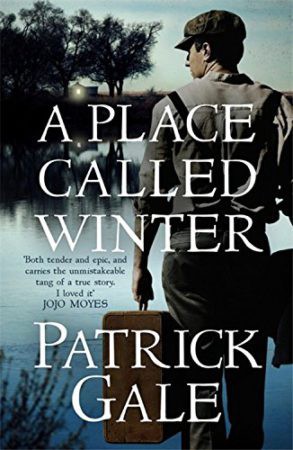
A Place Called Winter
By Patrick Gale
First published in 2015, A Place Called Winter follows the story of Henry Cane, a shy and stammering young man, at the dawn of the 20th century. Henry is forced by his wife?s family to flee England to avoid scandal after they discover him engaging in a sexual relationship with another man. He immigrates to Canada and is allocated a homestead in the rural village of Winter, Saskatchewan. It is in this harsh setting, a world away from his gilded life in Edwardian England, that he undertakes a stunning, violent, maddening, and moving journey of self-discovery and validation.
Gale?s meticulously researched novel is based on the mystery of his own grandfather also named Henry Cane. The real Cane, like his fictional counterpart, fled England and moved to Canada to set up a homestead. While researching his grandfather?s story, Gale discovered that the Canadian prairies were something of a gay underground railroad during the early twentieth century. Many upper-class English families cast their ?gay? sons out to the remote Prairies ? I put gay in quotes because our connotation of gay as a sexual identity didn?t exist in this era. Ironically, many men found freedom in a homoerotic environment where there were very few women. Indeed, the all-male dances depicted in the novel were common in the prairies during this time. This novel not only contains forgotten gay history, it is also a beautifully crafted and highly emotional read ? a definite page-turner.
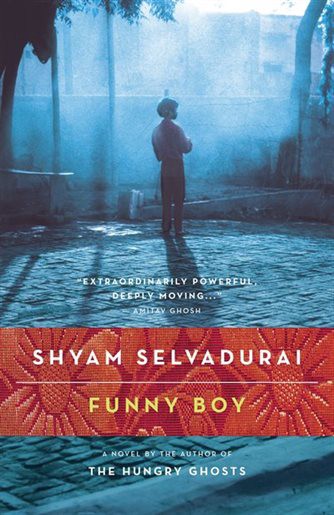
Funny Boy
By Shyam Selvadurai
First published in 1994, Funny Boy is the coming-of-age story of Arjun Chelvaratnam a Tamil boy struggling with his sexuality and gender identity in Sri Lanka. The story is set in the years leading up to the 1983 Sinhala-Tamil riots. The novel is divided into six interconnected stories that follow Arjun from childhood to his teenage years.
I first discovered this novel in a Canadian literature course I took in university. On the surface, it seems like a book that shouldn?t resonate with me as deeply as it does. Culturally, Arjun and I come from different worlds, yet there is a universality to Arjun?s experiences. His childhood and his sense of difference is something most gay men can connect to. He is different from the other boys and often blurs gender lines. He easily forms deep friendships with women but feels disconnected from the men around him. He also enjoys wearing his aunt?s jewellery, and wearing his mother?s makeup. These are experiences familiar to many gay men when they look back on their childhood. The central theme of the novel is the loss of innocence experienced by many LGBTQ children. Arjun?s view of the world is drastically altered as adult constructions of gender and sexuality are imposed on him. Selvadurai does a remarkable job of making Arjun such a fascinating and resilient character. He perfectly portrays the confusion, anguish, and even excitement indicative of the coming out process.
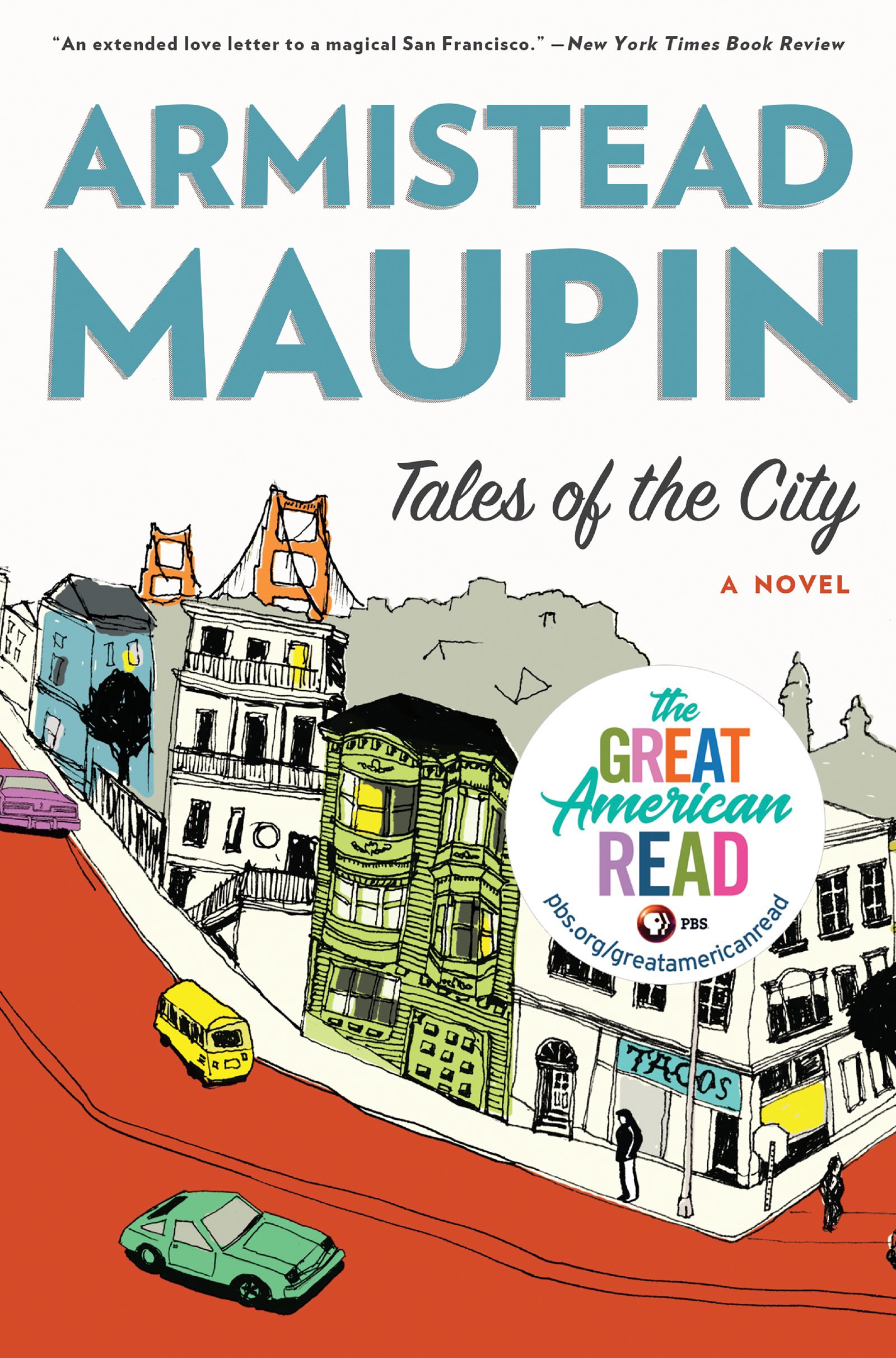
Tales of the City
By Armistead Maupin
First published in 1978, Tales of the City has become a seminal piece of LGBTQ American fiction. It has inspired numerous sequels and three (soon to be four) TV mini-series. The novel, set in 1976, follows twenty-something Mary Ann Singleton who moves to San Francisco on a whim. She finds an apartment at 28 Barbary Lane owned by the eccentric, mysterious and pot growing Mrs. Anna Madrigal. Mary Ann leads a life she never expected, making friends with her fellow tenants: the bisexual Mona, the sexy and woman loving Brian, Michael ?Mouse? a sweet and loving gay man, and Norman an odd and socially awkward man living in the rooftop shed. Along the way she conducts an affair with her boss, learns the shocking secret of Madrigal?s past, and finds her life changed forever.
I?ve discovered that Tales of the City is one of those novels that people either love or hate despite its frequent appearances on gay fiction lists like this one. Maupin creates a group of quirky characters that are instantaneously memorable ? who wouldn?t want Anna Madrigal to be their landlord? This is a quick read with Maupin focusing on dialogue over exposition, setting a fast pace. After reading the novel for the first time, a friend of mine summed it up by calling it silly, shameless, and downright gaudy ? naturally he loved it. Where Maupin really knocks it out of the park is his incorporation of San Francisco. The city is a key character and the novel beautifully captures the eccentricities of both the city and its inhabitants in the years just prior to the AIDS crisis.

Giovanni?s Room
By James Baldwin
First published in 1956, Giovanni?s Room was a game changer as one of the first mainstream novels in America to deal directly with queer themes. The story centers on the life of David, a young American man living in Paris who begins an affair with an Italian man, Giovanni. David, who has a girlfriend living in Spain, is struggling with his desire to lead a conventional American life ? e.g. marry his girlfriend and start a family ? and his sexual attraction to men. His struggle ultimately leads him down an unexpected path with tragic consequences.
Giovanni?s Room is regarded as a masterpiece within the gay genre and appears on virtually every list of must-read LGBTQ books. The novel is generally required reading in any university course dealing with queer literature. As you can imagine with its frank portrayal of same-sex love, the novel was highly controversial when it was first published. Late in his life, Baldwin describes that his publisher, Doubleday, refused to publish the novel arguing it would destroy his career. As a black writer in the pre-civil rights era, Baldwin?s management was fearful a novel about homosexual romance would ostracize both black and white communities. Baldwin, determined to get his work published, went to England and personally sold the book to Michael Joseph before Dial Press took a risk and published the book in America. Despite being over sixty years old, one thing that has always struck me about the novel is its timeless themes. Regardless of the social changes between the 50s and today, the novel is one of the most accurate portrayals of being gay in a hetero-normative world. David?s social isolation, self-loathing and ideas of masculinity are as much part of the gay experience in 2019 as they were in 1956.
Trivia: Since the 1970s, there have been frequent attempts to bring Giovanni?s Room to the big screen. Baldwin wrote a screenplay based on the novel in 1978 which has only recently been unearthed. With the recent critical success of the film If Beale Street Could Talk based on Baldwin?s novel of the same name, there is renewed talked of bringing Giovanni?s Room to the big screen.
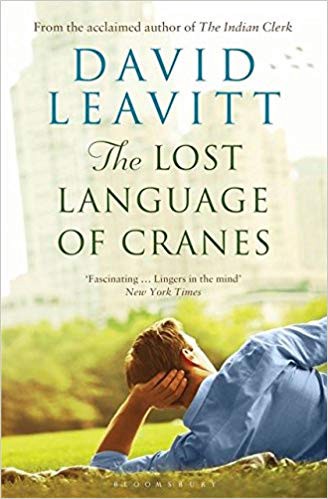
The Lost Language of Cranes
By David Leavitt
First published in 1986, The Lost Language of Cranes centers on the lives of a father and son who are both coming to terms with their sexuality. Philip comes out to his parents after falling in love with a man for the first time. Unbeknownst to Philip, his father Owen is struggling with his own suppressed homosexuality. Philip?s coming out leads to a breaking point in his parents? marriage and changes the direction of all of their lives forever.
I?ll admit that when I first read the novel in my early twenties, I wasn?t all that impressed by it. Yes, it was a good book but something about it failed to ?wow? me. It was only on a recent revisit that I really came to understand and appreciate the story Leavitt crafts. The novel is really an allegory for the history of the LGBTQ experience in the twentieth century. Philip, the young 25-year-old gay man, is more comfortable and open about his sexuality representing the newer more self-confident gay identity of the late 20th century. Owen, on the other hand, is a man who came of age in the 1950s, an age of conservative family values. He spent much of his life denying who he was and followed the hetero-normative conventions of the American dream by marrying, having a son, and leading a respectable career. The novel is an interesting spin on the classic American father-son tale in which the father traditionally acts as the guide for his wayward son.
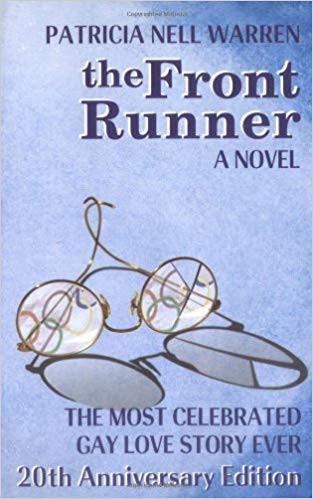
The Front Runner
By Patricia Nell Warren
First published in 1974, The Front Runner focuses on Harlan Brown an athletic director at Prescott College, a fictitious liberal arts college in New York City. Harlan comes to Prescott after being forced to resign from a coaching position at Pennsylvania State University, stemming from false accusations of sexual harassment made by a male student. While at Prescott, Brown is persuaded to coach three track stars who had been expelled from their home universities for being openly gay. It is during this training that Brown and one student, Billy, fall in love and start a relationship. Along the way, they must face the homophobia and hyper-masculinity found in the sports world.
The Front Runner became one of the first gay romance novels to achieve mainstream success and was a New York Times bestseller. Despite its success, the novel has become somewhat obscure, and I struggled to get a copy of it. I only became aware of this novel following the death of Patricia Nell Warren earlier this year. When I was reading the novel, I was struck by how ahead of its time it was. If it weren?t for some references to the politics of the late 60s and early 70s, its themes of same-sex parenting and gay marriage provides a very contemporary feel. Warren crafts a highly emotional story that keeps you gripped for much of the final chapters with a shocking turn of events. Like Tales of the City, Warren paints of vibrant picture of the gay community in New York City in the decade before the AIDS crisis of the 80s.

The Heart?s Invisible Furies
By John Boyne
First published in 2017, The Heart?s Invisible Furies centers on the life of Cyril Avery ? but not a real Avery ? from conception to the end of his life. Cyril is born out of wedlock to a teenage mother in a rural Irish community. Exiled by her family and unable to raise the child on her own, Cyril?s biological mother gives him up for adoption to the eccentric Avery family. Cyril spends a lifetime coming to terms with who he is in a life that is filled with love, tragedy and humour.
At nearly 600 pages, this book is epic and stretches across much of 20th century Irish history. Yet despite this, it is a delightful, moving, and often hysterical read. It is one of those books that is very difficult to put down. With Cyril, Boyne creates an everyday man who is highly relatable and lovable. He leads a fairly underwhelming and average life despite all the extraordinary and shocking events that take place around him. His unrequited love for his best friend, Julian, is one of the underlying stories of his life, and very relatable for any gay man who has fallen for the unobtainable straight guy. Boyne is such a talented writer that aspects of the story that should be viewed as cliched are so well written, and often hilarious, you can?t help but love his choices.

Call Me by Your Name
By Andre Aciman
First published in 2007, Call Me by Your Name centres on the romantic relationship between a seventeen-year-old Elio and his father?s twenty-four-year-old doctoral student Oliver. The novel chronicles their summer romance in Italy during the late 1980s, and briefly follows their relationship for twenty years through Elio?s first-person narration.
This novel is one of my favourites of all time. Aciman crafts such a wonderfully simple story and it is this simplicity that makes it so beautiful. At its core, it?s a story of first love with all the excitement, delight and fear that typically contains. Elio personifies many gay men?s experiences of falling in love with another man for the first time. There?s resistance, fear and exhilaration at being with someone who feels the same way you do for the first time. The novel dwells on the question of how first love defines our lives, and how we never really let that person go entirely.
Trivia: Earlier this year, Aciman confirmed a sequel to the novel will be released in October 2019 entitled Find Me.
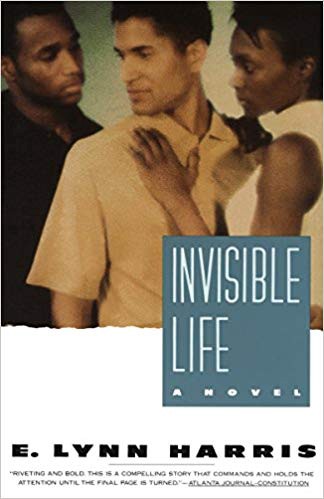
Invisible Life
By E. Lynn Harris
Originally self-published in 1991 and later published in wide release in 1994, Invisible Life follows Raymond Tyler?s coming of age as he faces the realities of being black and gay. A successful law student, with a beautiful girlfriend, and a wide range of career options, his world changes when he engages in a sexual relationship with his best friend Kelvin. After graduation Raymond begins the challenge of living his life as a closeted black man. He engages in relationships with men and women before falling in love with Basil, a closeted football player for the Warriors.
This book holds a special place in my heart as it was the first gay themed book I read as a closeted teenager. I came upon this book purely by accident in my local library and read it in one evening alone in my bedroom. E. Lynn Harris, who sadly passed away unexpectedly in 2009, creates a gripping, emotional and sexy story that is a real page turner. Even today, LGBTQ fiction is dominated by white characters, so, this novel, and its subsequent sequels, gives a much-needed voice to the gay African American experience. Harris highlights the intersectional prejudice faced by many black gay men within both the white and black communities.
***
As I stated at the beginning, this is not a definitive list of the best gay genre novels in existence, but ones that have deep meaning for me. Did you agree with these choices? Are there books you think I should add? Please comment below!


